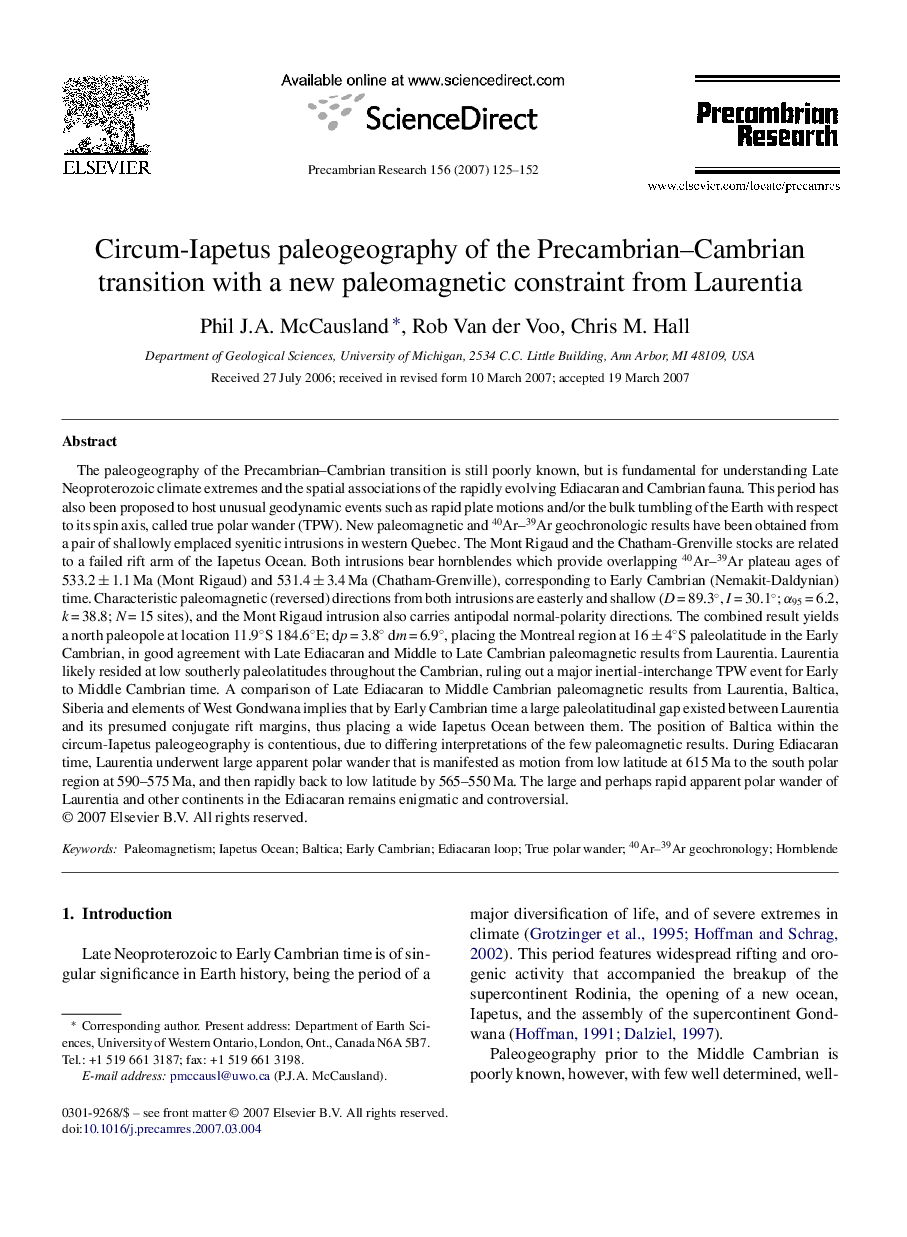| Article ID | Journal | Published Year | Pages | File Type |
|---|---|---|---|---|
| 4724594 | Precambrian Research | 2007 | 28 Pages |
Abstract
The paleogeography of the Precambrian-Cambrian transition is still poorly known, but is fundamental for understanding Late Neoproterozoic climate extremes and the spatial associations of the rapidly evolving Ediacaran and Cambrian fauna. This period has also been proposed to host unusual geodynamic events such as rapid plate motions and/or the bulk tumbling of the Earth with respect to its spin axis, called true polar wander (TPW). New paleomagnetic and 40Ar-39Ar geochronologic results have been obtained from a pair of shallowly emplaced syenitic intrusions in western Quebec. The Mont Rigaud and the Chatham-Grenville stocks are related to a failed rift arm of the Iapetus Ocean. Both intrusions bear hornblendes which provide overlapping 40Ar-39Ar plateau ages of 533.2 ± 1.1 Ma (Mont Rigaud) and 531.4 ± 3.4 Ma (Chatham-Grenville), corresponding to Early Cambrian (Nemakit-Daldynian) time. Characteristic paleomagnetic (reversed) directions from both intrusions are easterly and shallow (D = 89.3°, I = 30.1°; α95 = 6.2, k = 38.8; N = 15 sites), and the Mont Rigaud intrusion also carries antipodal normal-polarity directions. The combined result yields a north paleopole at location 11.9°S 184.6°E; dp = 3.8° dm = 6.9°, placing the Montreal region at 16 ± 4°S paleolatitude in the Early Cambrian, in good agreement with Late Ediacaran and Middle to Late Cambrian paleomagnetic results from Laurentia. Laurentia likely resided at low southerly paleolatitudes throughout the Cambrian, ruling out a major inertial-interchange TPW event for Early to Middle Cambrian time. A comparison of Late Ediacaran to Middle Cambrian paleomagnetic results from Laurentia, Baltica, Siberia and elements of West Gondwana implies that by Early Cambrian time a large paleolatitudinal gap existed between Laurentia and its presumed conjugate rift margins, thus placing a wide Iapetus Ocean between them. The position of Baltica within the circum-Iapetus paleogeography is contentious, due to differing interpretations of the few paleomagnetic results. During Ediacaran time, Laurentia underwent large apparent polar wander that is manifested as motion from low latitude at 615 Ma to the south polar region at 590-575 Ma, and then rapidly back to low latitude by 565-550 Ma. The large and perhaps rapid apparent polar wander of Laurentia and other continents in the Ediacaran remains enigmatic and controversial.
Keywords
Related Topics
Physical Sciences and Engineering
Earth and Planetary Sciences
Geochemistry and Petrology
Authors
Phil J.A. McCausland, Rob Van der Voo, Chris M. Hall,
